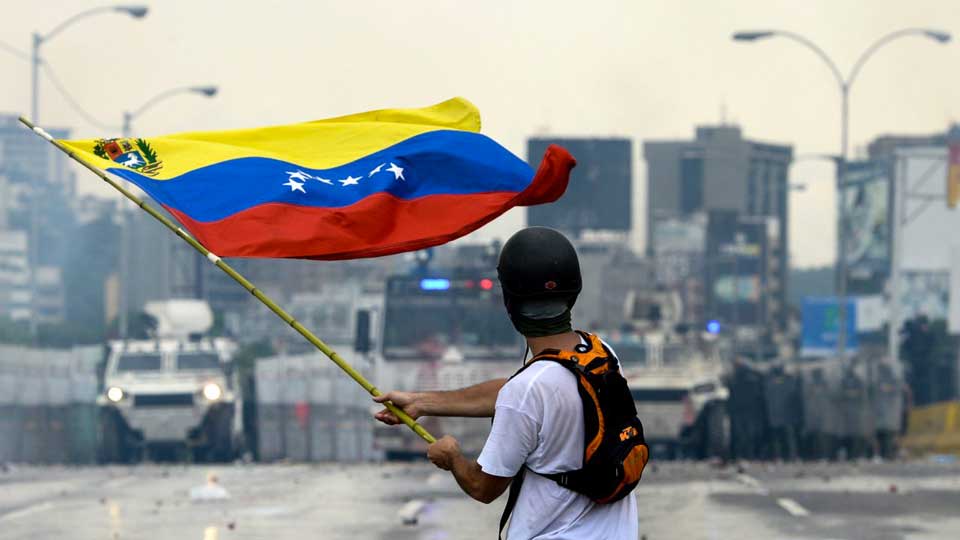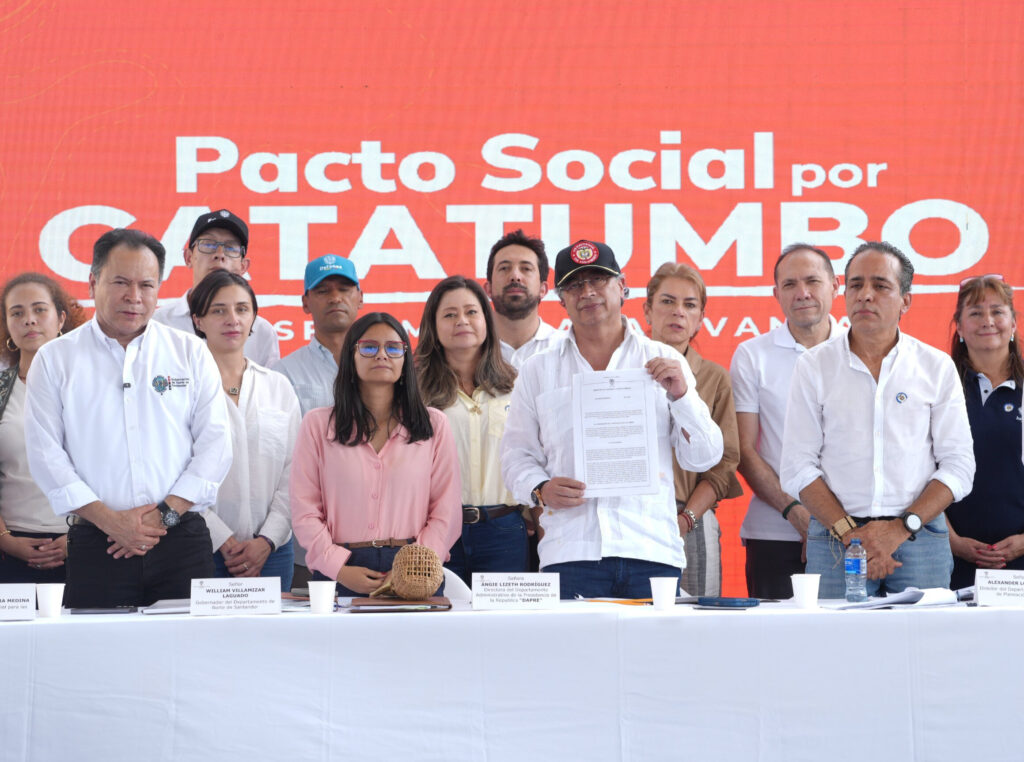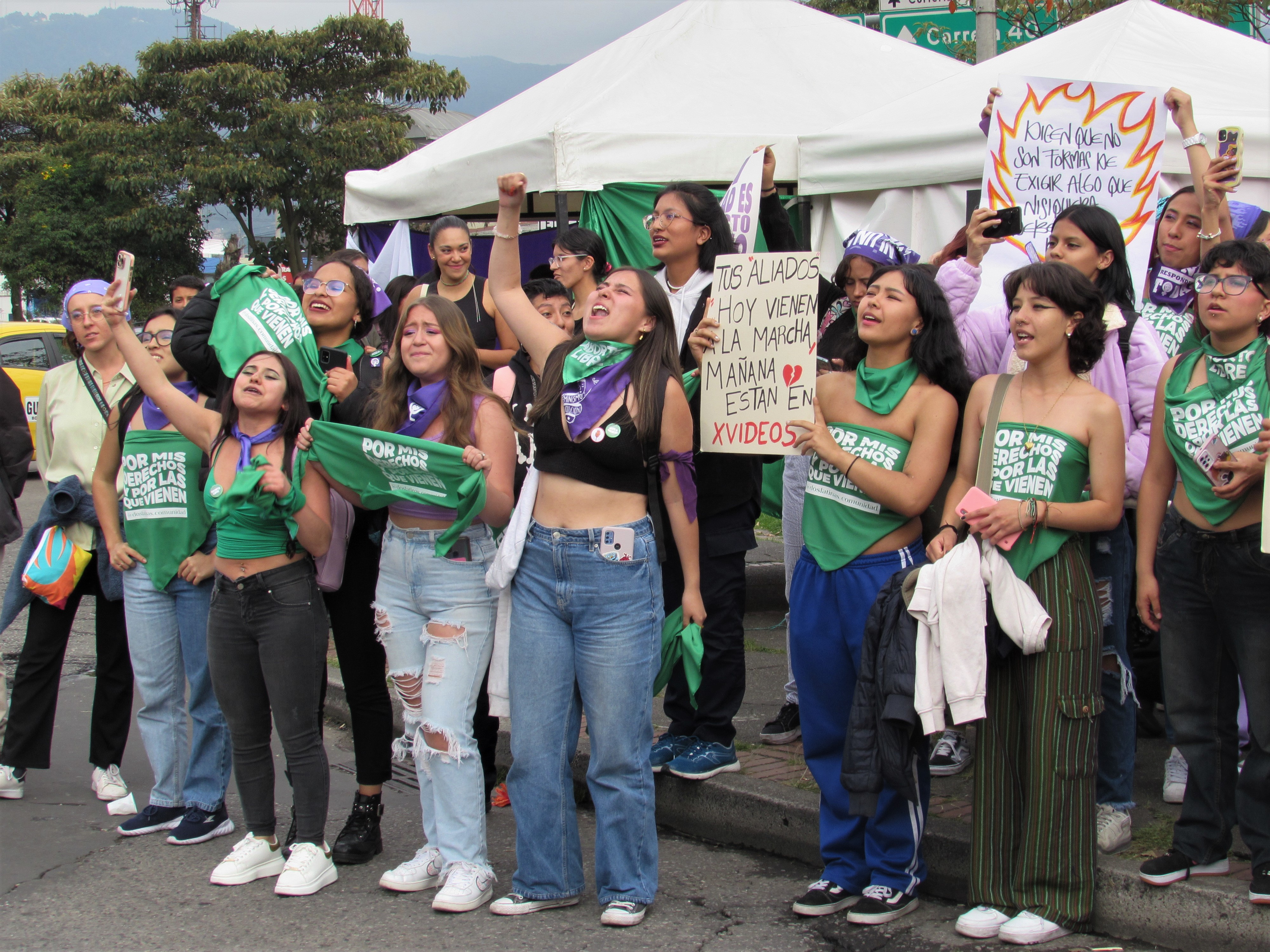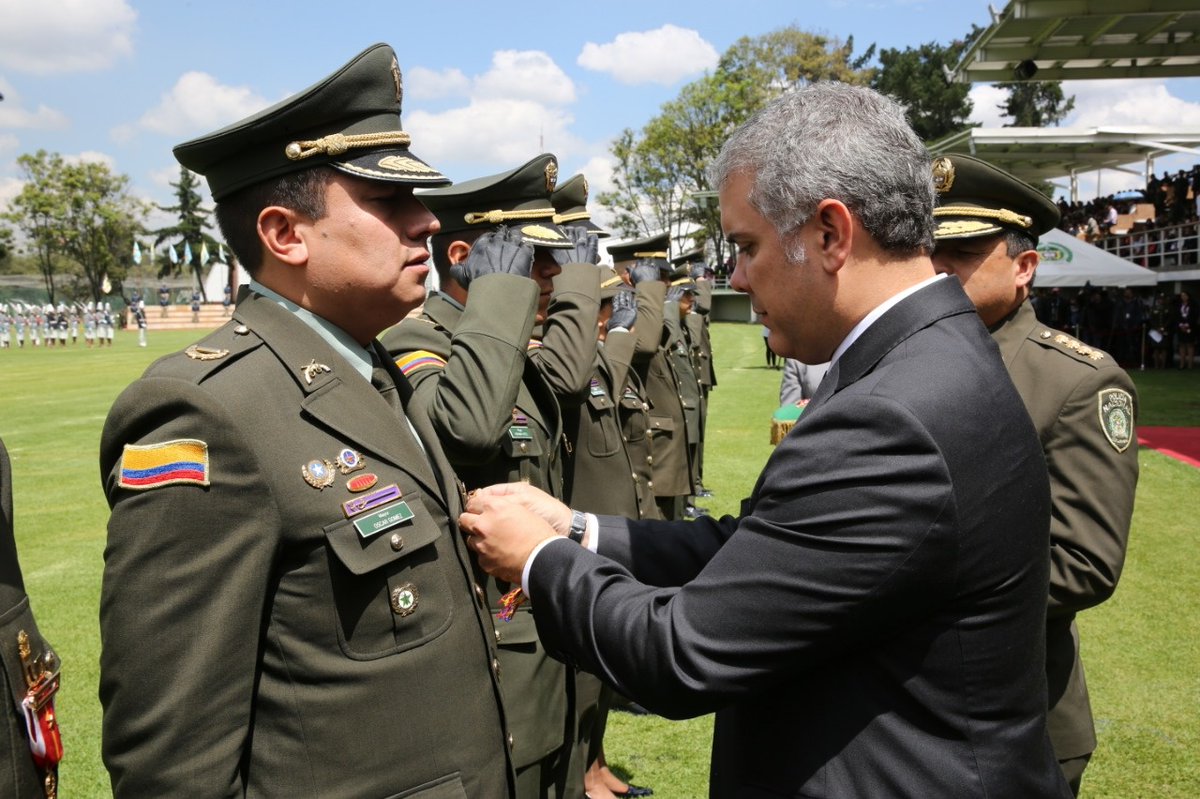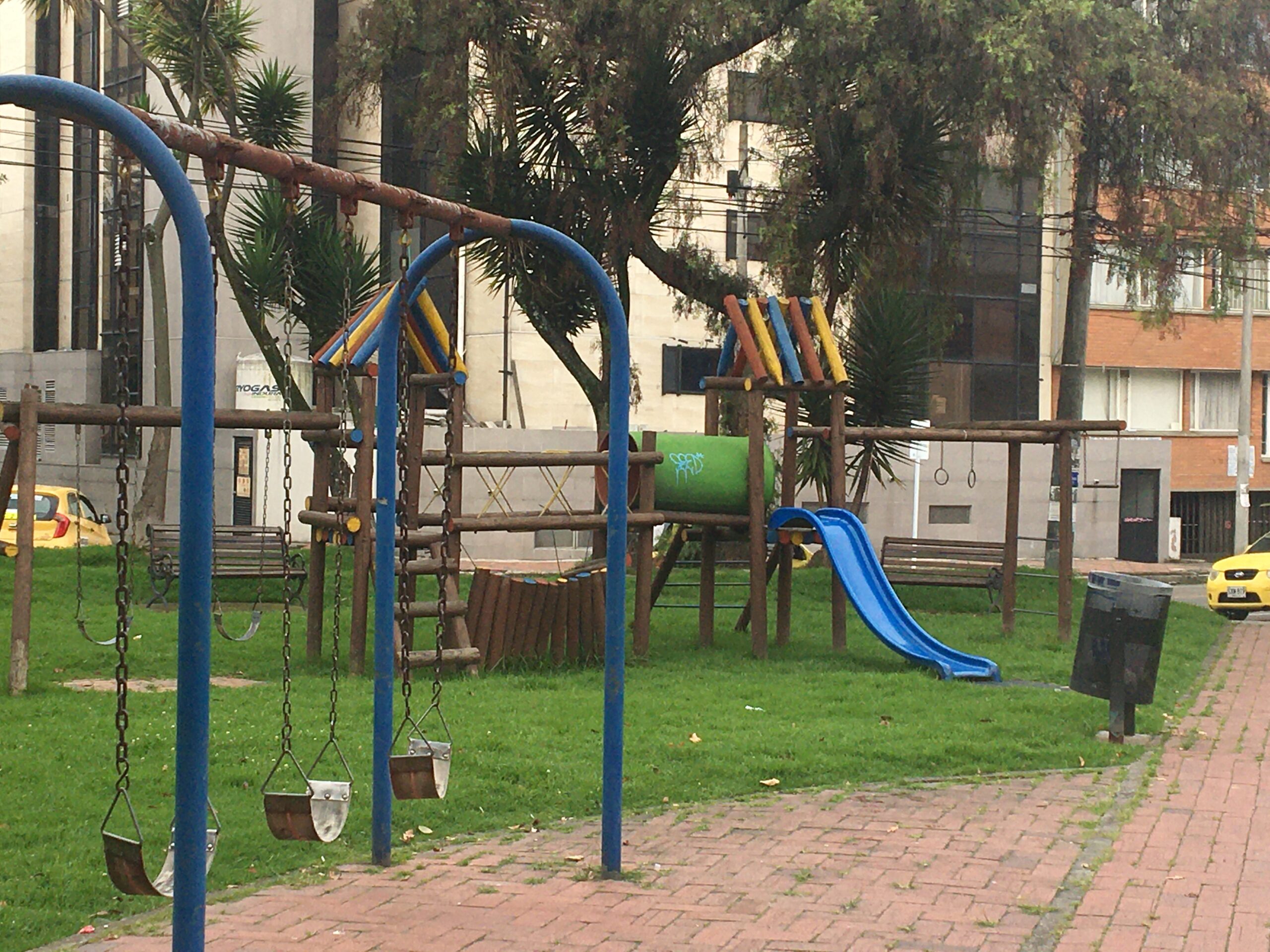Four policemen injured as Interior Minister claims “criminal structures” behind capital’s disturbances.

The Colombian capital saw extraordinary scenes of chaos last Friday afternoon as masked protesters linked to the Peoples’ Congress movement shot arrows at anti-riot police stationed to protect the US Embassy close to Avenida 26, one of Bogotá’s main thoroughfares.
Video posted online showed a policeman with an arrow embedded in his body armour amid clouds of teargas. In other photographic evidence, protesters launched streams of explosive projectiles – known locally as papa bombas, or ‘potato bombs’ – during running street battles that closed the main airport road for several hours.
Bogotá mayor Carlos Galan said he had ordered the specialist police, UNDMO, to protect the embassy and nearby streets. He condemned the armed attacks as “organized and premeditated”.
“I demand that the national government dismantle these armed groups. It cannot negotiate with shock militias that attack law enforcement with arrows and explosive devices.”
The protesters, who never put the US Embassy under any serious threat, retreated to the National University where an estimated 2,000 persons have been camping since an unauthorised incursion onto the campus last Monday 13th of October, as reported in The Bogotá Post.
Lethal weapons
The injuries to the police appeared slight, though according to city authorities could have been much worse. Indigenous groups were displaying their bows and arrows at their campsite last week, where they had also set up a practice target range. The artisanal hardwood bows fire bamboo arrows tipped with hardwood, and can be lethal.
“We hunt deer with these arrows,” a member of an Araucan indigenous group told The Bogotá Post. Similar weapons were filmed being used in the Friday disturbances.
Colombia’s defence minister said in his own tweet that the use of the potentially lethal weapons on Bogotá’ streets was considered as ”attempted murder”. Demonstrators had crossed the line from legitimate protest to illegal actions, he said: “The material and intellectual authors of these crimes will be captured.”
The violent scenes came after a week of mostly peaceful protests by social groups under the umbrella of the Congreso de los Pueblos – the Peoples’ Congress. Community groups had travelled from all over Colombia to demand government action on chronic abandonment of rural communities particularly in conflict areas, and undertaken peaceful marches and occupations of government offices across the city during five days.
Criminal structures
For their part, one group, the Coordinador Nacional Agrario, linked the violence that erupted on Friday to their march on the US embassy to the need to “protect our sovereignty” against perceived US aggression in the region, particularly the US naval build-up off the coast of Venezuela, and plans for military bases in neighbouring Ecuador.
The umbrella Congreso de Los Pueblos in turn described their actions as “belligerently peaceful”. Meanwhile indigenous groups condemned comments by Colombia’s interior minister Armando Benedetti, as reported in El Tiempo newspaper, that “behind these protests there are criminal structures”. In a letter published online the Asociacion Minga demanded the minister avoid “repression or criminalisation” of social protest.

Later, the interior minister refused to walk back his comments, claiming that state intelligence sources were looking at links between armed groups and the violent acts.
“They didn’t come to negotiate, they came to heat things up. That’s not what someone who wants to negotiate does. It’s clear that criminal structures are involved,” said Benedetti.
His comments suggested rifts within the Petro government which has frequently encouraged peaceful protests in Bogotá, often with groups bussed in from across Colombia, to show popular support for social reforms.
An investigation by El Tiempo newspaper revealed links between organisers of the Congreso de Los Pueblos with politicians from the Petro’s Pacto Historico party, with evidence of funding and logistic support for last week’s mobilisations.
These accusations throw into doubt government claims that it was unaware of the planned protests, suggesting a failure to coordinate plans with city authorities, as well as neglecting to alert the Universidad Nacional of a mass incursion of protesters until now camped for seven days at the campus.
Agreement reached, justice far off
In the aftermath of Friday’s street battles, the government and the Congreso de Los Pueblos announced an agreement that should in theory end the protests, with promises or regional talks on urban reform, housing, ethnic rights, education, and mining and energy policy. In return the Congreso de los Pueblos would retreat from occupied government buildings in the following days. There was no news on if, or when, they would decamp from the Universidad Nacional.

For his part, President Petro welcomed the accord while lamenting the violent protests.
“I ordered the utmost care with the US embassy in Bogotá. Unfortunately, after reaching an agreement … to lift the blockades, a more radical group attacked the police guarding the embassy, wounding several young people with arrows,” he stated.
The question for some commentators was whether the violent protesters would now face punishment. After the protest Bogotá’s mayor Carlos Gálan called on the Attorney General’s Office to “investigate these armed groups, and their members who carried out the acts”.
Any such justice might be far off: Friday’s pact failed to mention the violent incidents, or any potential criminal investigation. And as we previously reported, the university campus, where many protesters are camped, is off-limits to state security forces in most circumstances.
Friday’s agreement did establish that the Attorney General’s Office – in what could perhaps be seen a snub to Interior Minister Benedetti and Mayor Gálan – would instead dialogue with the Congreso de Los Pueblos “to prevent and address the stigmatization and prosecution of social protests”.

